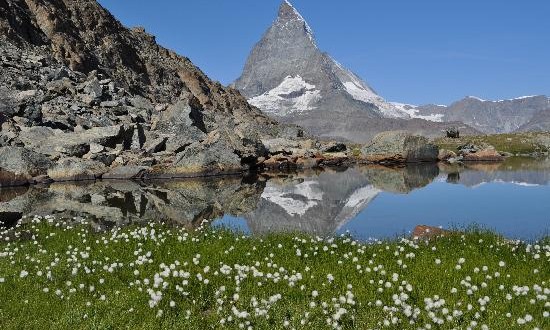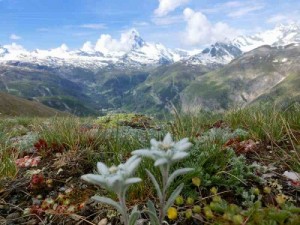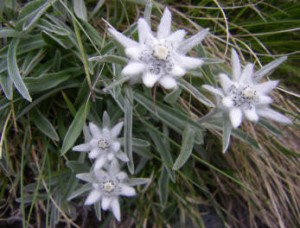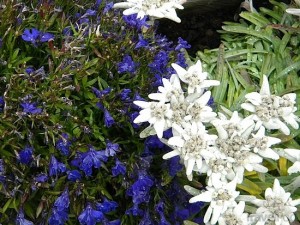Zermatt is not only famous for skiing all year long and the magnificent Matterhorn. Zermatt is also popular for their rich alpine natures. One of the most famous and popular alpine flower is Edelweiss. Edelweiss is the queen and symbol of Alps and these rare alpine flowers are exceptionally rich around the mountain landscape of Zermatt.
The name Edelweiss is from German literally meaning “noble white”, edel meaning noble and weiss meaning white. In the past it was called Chatzen-Talpen or cat’s paw and Wullbluomen or wool flower. This rare alpine flower is unequally distributed and prefers rocky limestone places at around 1800 to 3000 meters in altitude. It is non toxic, and has been used traditionally in fold medicine as a remedy against abdominal and respiratory diseases. The dense hair appears to be an adaptation to high altitudes, protecting the plant from cold, aridity and ultraviolet radiation. Since it is rare and short lived, this flower has been used as a symbol for alpinism, for rugged beauty and purity associated with the Alps and as a national symbol.
This rare and beautiful flowers can be found on theme hikes in and around Zermatt. You can take the Edelweiss path, Botanical education trail, Flower trail or Via Ferrata to view Edelweiss. Edelweiss is strictly protected so you can not pick these beautiful flowers. Since they are rather small, it may be hard to find them but it usually grows in limestone soil in mountain landscapes, on steep blue grass slopes and hills. Edelweiss often lives together with the alpine aster, so if you have trouble looking for them, try to focus on finding the beautiful violet flowers with the yellow center. Edelweiss grows on stalk that can reach up to twenty centimeters in nature and they have single yellow flower surrounded by five to six smaller yellow flower heads. These are surrounded by small pointed white leafs that create an attractive and distinctive star pattern.
Edelweiss can live on alpine meadows and can be recognized from a distance because the flower often takes on a silver sheen in the light. Covered in dense hair, thousands of tiny air bubbles collect in the fine hairs. They protect the flower from drying out and protect them from freezing. These air bubbles are the reason sunlight makes the Edelweiss appear illuminated. This glittering air bubbles also is a signal for honey seeking insects. The leaves and petals have a compacted covering of fine brilliant white hairs and gives the appearance of being soft and woolly and has a velvet texture to the touch. This beautiful alpine flower usually blooms around July to September.




